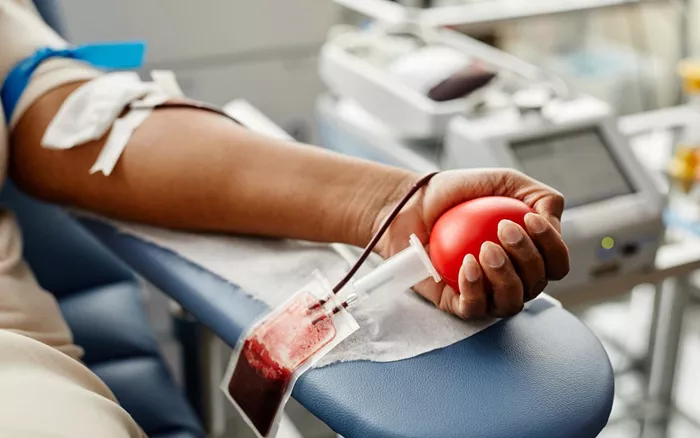The Australian Red Cross’ donation service, Lifeblood, has announced that starting July 14, most gay and bisexual men will be eligible to donate plasma, regardless of their sexual activity. This marks a major shift from rules created during the HIV crisis in the 1980s.
The change is part of a world-first “plasma pathway” policy that will allow people who have sex with the same gender to donate plasma for life-saving treatments, as long as they meet other medical and safety requirements.
What’s New for Plasma Donation?
From July 14, Lifeblood will remove most sexual activity-based restrictions for plasma donations. People who have had sex with a partner known to have HIV or other blood-borne viruses will still need to wait.
But otherwise, gay and bisexual men—including those in relationships or who take HIV-prevention medicine (PrEP)—can now donate plasma. This change is possible because plasma used for medicine goes through extra steps to destroy viruses and bacteria.
What’s New for Blood and Platelet Donation?
Alongside changes to plasma rules, the Therapeutic Goods Administration (TGA) has approved a gender-neutral approach for screening blood and platelet donors. This means everyone—no matter their gender or orientation—will be asked the same set of questions.
All donors will be asked if, in the past six months, they had sex with a new partner or with more than one partner. If they answer “yes,” they’ll be asked whether they’ve had anal sex in the past three months.
If they say yes to that too, they will be asked to wait six months before donating whole blood, due to the higher risk of HIV from anal sex. However, they can still donate plasma right away.
Why Were These Rules Created?
The original rules came into place during the 1980s HIV crisis. At that time, gay and bisexual men were banned from donating blood due to the high risk of spreading HIV through transfusions.
Routine HIV testing for donations began in 1985, but early tests couldn’t detect the virus for up to three months. Over the years, as testing improved, the wait time was reduced—from a lifetime ban to 12 months, and then to three months in 2021.
Why the Change Now?
HIV infection rates have fallen sharply in Australia. In 2023, only 722 new cases were reported nationwide. At the same time, today’s HIV tests can detect the virus within one week of exposure.
Because of these advancements, medical experts now believe that the old rules were too strict—especially for low-risk individuals like men in monogamous relationships.
Why Are Plasma Rules More Flexible?
Whole blood donations are usually used directly in transfusions and don’t go through extra treatment steps. That’s why stricter screening rules are still in place.
Plasma, on the other hand, is used to make special medicines and goes through extra processing to kill any viruses or bacteria. This makes plasma donation safer, even if the donor has a higher risk profile.
How Many New Donors Could Be Added?
A national survey by Lifeblood and researchers found that previously, only 40% of men who have sex with men were eligible to donate. Under the new plasma pathway, that number is expected to jump to 74%.
This change could add about 626,500 new eligible plasma donors to the system, including people on PrEP.
Will People Be Comfortable Answering Personal Questions?
According to the same national survey, most Australians are okay with being asked about their sexual activity if it helps keep the blood supply safe. However, support for these questions varies by age, religion, and cultural background.
To keep public trust, Lifeblood says it will work on community outreach and education to explain the reasons for the questions.
Is the Blood Supply Still Safe?
Yes. Other countries like the UK, Canada, and the Netherlands have already adopted similar screening systems—and studies there show no added risk to the blood supply.
The key idea is to screen based on behavior, not identity—making sure all donors are evaluated by the same medical standards.
What Happens Next?
July 14: New plasma rules take effect. Most gay and bisexual men will be eligible to donate plasma immediately.
Later in 2025: The gender-neutral blood screening system will roll out once Lifeblood updates its systems, trains staff, and receives full government approval.
Experts will continue to monitor the changes to make sure the blood supply stays safe and donor participation increases.
In Summary
Australia is making blood and plasma donation more inclusive by updating old rules designed during the HIV epidemic. Thanks to better testing and virus-processing techniques, more people—including gay and bisexual men—can now donate plasma and, eventually, whole blood under fairer, behavior-based screening.
Related topics:
- Testosterone Therapy May Harm Healthy Men, Doctors Warn
- Many Men Hide Money Struggles, Risking Health and Relationships
- Walking 7,000 Steps Daily May Cut Early Death Risk by 70%


